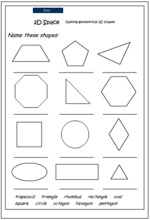
If two non-vertical lines that are in the same plane has the same slope, then they are said to be parallel. This means that every angle in a rectangle is a right (90∘) angle. Each pair of opposite sides is parallel, and adjacent sides are perpendicular. Squares and rectangles always have four right angles! A triangle will have perpendicular lines if it has a little square where two lines intersect to indicate there’s a right angle there or if someone tells you that the triangle is a right triangle. How do you know if a shape is perpendicular? Some shapes which have perpendicular lines are:
#PERPENDICULAR SHAPES HOW TO#
6 How to show that a line is perpendicular to CD?.5 How are perpendicular lines always perpendicular to each other?.The slope of a perpendicular line is - 4 3, because that is the negative reciprocal of the slope of the given line.

So, what is the negative reciprocal of 3 4? You can find the slope of a line perpendicular to this line by using the points and going through ( y 2 - y 1 ) ( x 2 - x 1 ), or you can just nab it right out of the slope-intercept form! Yes, the slope of this line is 3 4. With that information, can you calculate the slope of any line perpendicular to it? We are going to give you the two points plotted on a positive sloping line, and the slope-intercept form: So, in order, we have these negative reciprocals: You do two things to find the negative reciprocal of the slope, and the order does not matter: Without worrying about seeing the lines themselves, find the negative reciprocals of these slopes: Slopes of perpendicular lines will always be negative reciprocals. M = ( y 2 - y 1 ) ( x 2 - x 1 ) Negative Reciprocals If you do not know the slope, m, of the positive sloping line, then you will need to calculate it using the slope formula: So it will first be 2 1 (the reciprocal), but it must also be - 2 1 (the negative or opposite reciprocal), to slope downward at a right angle to our first line. Lines perpendicular to that will have reciprocal slopes. Whoa! We have to get the opposite slope, so the line "stands up" more than it "lies down," but we also have to make it negative, so it goes downhill if the first line went uphill.Ī line where m = 1 2 is a positive slope (going uphill). It will be a reciprocal of the positive line's slope, BUT.Here is the difficult part of finding the slope of the line perpendicular to the positively sloping line: The two lines may not be oriented on a coordinate grid so that one of them lines up with (or is parallel to) either the x-axis or y-axis. Perpendicular lines are lines intersecting at 90 °. In plane geometry, negatives are found in slopes that go "downhill." How To Find Perpendicular Slope The negative of a negative number is a positive number.įor practice, find the negative values of: The negative of a positive number is a negative number. The reciprocal of 0.75 = 75 100 the reciprocal is 100 75 = 4 3.To find reciprocals of decimals, you can convert the decimal to a fraction and then find its reciprocal, or you can place the decimal under 1 as a fraction and use a calculator: To find reciprocals of whole numbers, place the number under 1 as a fraction: You can also find reciprocals of whole numbers and decimals. You may notice all you are doing with fractions is having the numerator and denominator switch places. Practice by finding reciprocals of these numbers: Reciprocals are two values such that multiplying them gives a product of 1, like 1 2 and 2 1: Mathematically, it is the change in y-value compared to its change in x-value.Ī perpendicular slope is the negative reciprocal of any other slope. The slope of a line is its angle, or steepness, compared to that x-axis value.

All slopes are compared to some other line, usually an x-axis. In plane geometry, all lines have slopes. A vertical line is perpendicular to a horizontal line. When two lines intersect at right angles, they are perpendicular lines, and we can measure their slope.

When two lines intersect, they must do one of two things: intersect at right angles or intersect at other angles. All pairs of lines in geometry must do one of two things: intersect or not intersect.


 0 kommentar(er)
0 kommentar(er)
